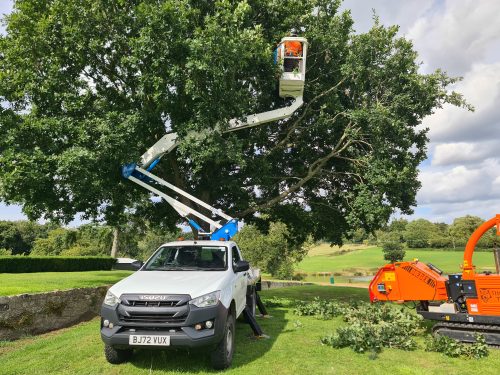 https://www.wilsontreesurgery.com/wp-content/uploads/2024/09/20230807_162313-500x375.jpg
https://www.wilsontreesurgery.com/wp-content/uploads/2024/09/20230807_162313-500x375.jpg
Machinery used in utility arboriculture
Read more
by Wilson Tree Surgery |
Daily vehicle checks are a crucial aspect of managing a fleet or owning a vehicle in the UK. These checks are not just a best practice—they are required by law and play a vital role in ensuring the safety of drivers, passengers, and other road users. This blog will outline the legal requirements and procedures for daily vehicle checks, and how you can help your drivers conduct these checks effectively.
In the UK, the Driver and Vehicle Standards Agency (DVSA) mandates that drivers of commercial vehicles conduct daily walk-around checks before using their vehicles. This requirement is part of broader legal obligations under the Road Vehicles (Construction and Use) Regulations 1986 and the Road Traffic Act 1988. These laws ensure that vehicles are always roadworthy and safe to operate.
Failing to perform these checks can lead to serious consequences, including fines, penalty points on a driver’s licence, and potentially even legal action against the driver or the company operating the vehicle.
The primary goal of daily vehicle checks is to spot and address any potential safety issues before the vehicle is used. Regular inspections are key to:
The DVSA advises that daily vehicle checks should be done before the vehicle is first used each day. This is particularly important if a vehicle is used by multiple drivers. Each driver must ensure the vehicle is safe before starting their shift. For vehicles that operate around the clock, it’s essential to conduct checks at the start of each shift change.
To ensure that your drivers can carry out thorough and efficient daily checks, consider the following:
By adhering to these guidelines, you can help ensure that your fleet is safe, compliant with legal standards, and less likely to experience costly breakdowns. Daily vehicle checks are a simple yet effective way to protect your drivers, your vehicles, and the public.
When checking your vehicle, use the following checklist to complete your checks:
If a trailer is attached you will also need to carry out the following checks as well as completing a W20 Book documenting your driving hours for the day:
By adhering to these guidelines, you can help ensure that your fleet is safe, compliant with legal standards, and less likely to experience costly breakdowns. Daily vehicle checks are a simple yet effective way to protect your drivers, your vehicles, and the public.
 https://www.wilsontreesurgery.com/wp-content/uploads/2024/09/20230807_162313-500x375.jpg
https://www.wilsontreesurgery.com/wp-content/uploads/2024/09/20230807_162313-500x375.jpg
Read more
 https://www.wilsontreesurgery.com/wp-content/uploads/2024/09/AdobeStock_475873508-500x333.jpeg
https://www.wilsontreesurgery.com/wp-content/uploads/2024/09/AdobeStock_475873508-500x333.jpeg
Read more
 https://www.wilsontreesurgery.com/wp-content/uploads/2024/09/pexels-valiphotos-589802-500x333.jpg
https://www.wilsontreesurgery.com/wp-content/uploads/2024/09/pexels-valiphotos-589802-500x333.jpg
Read more